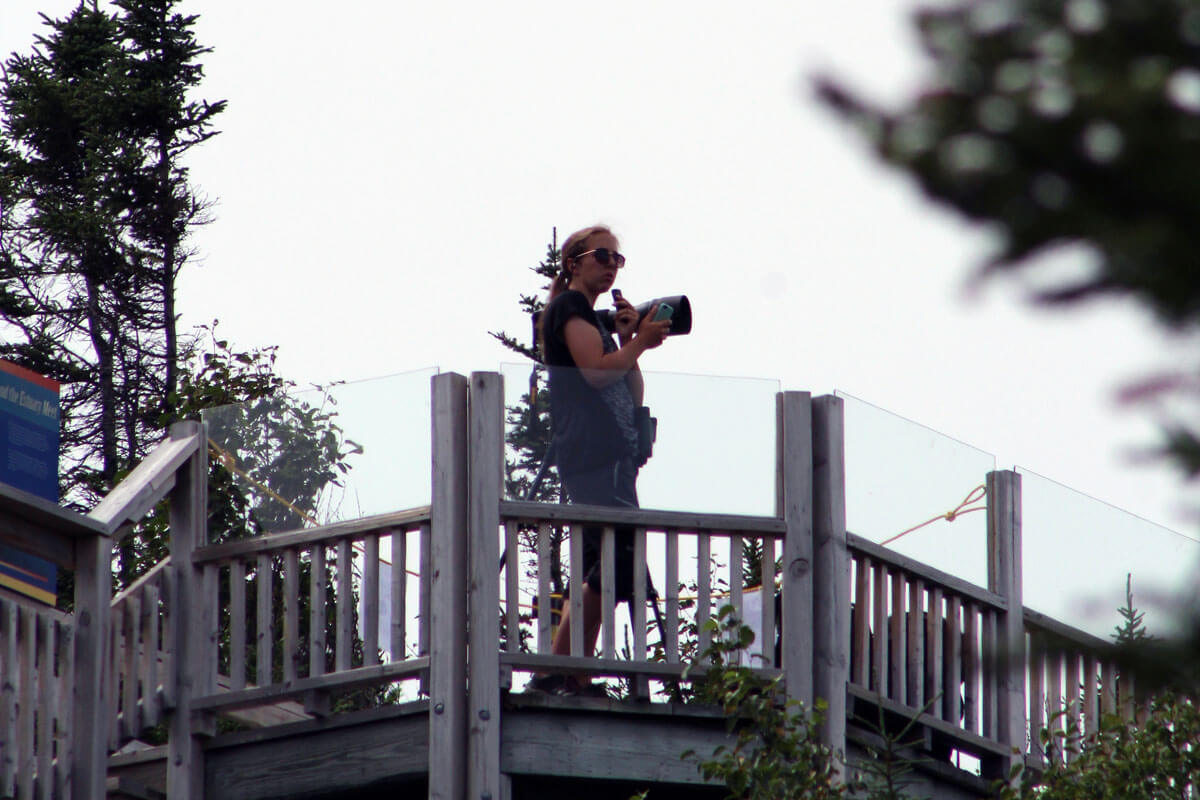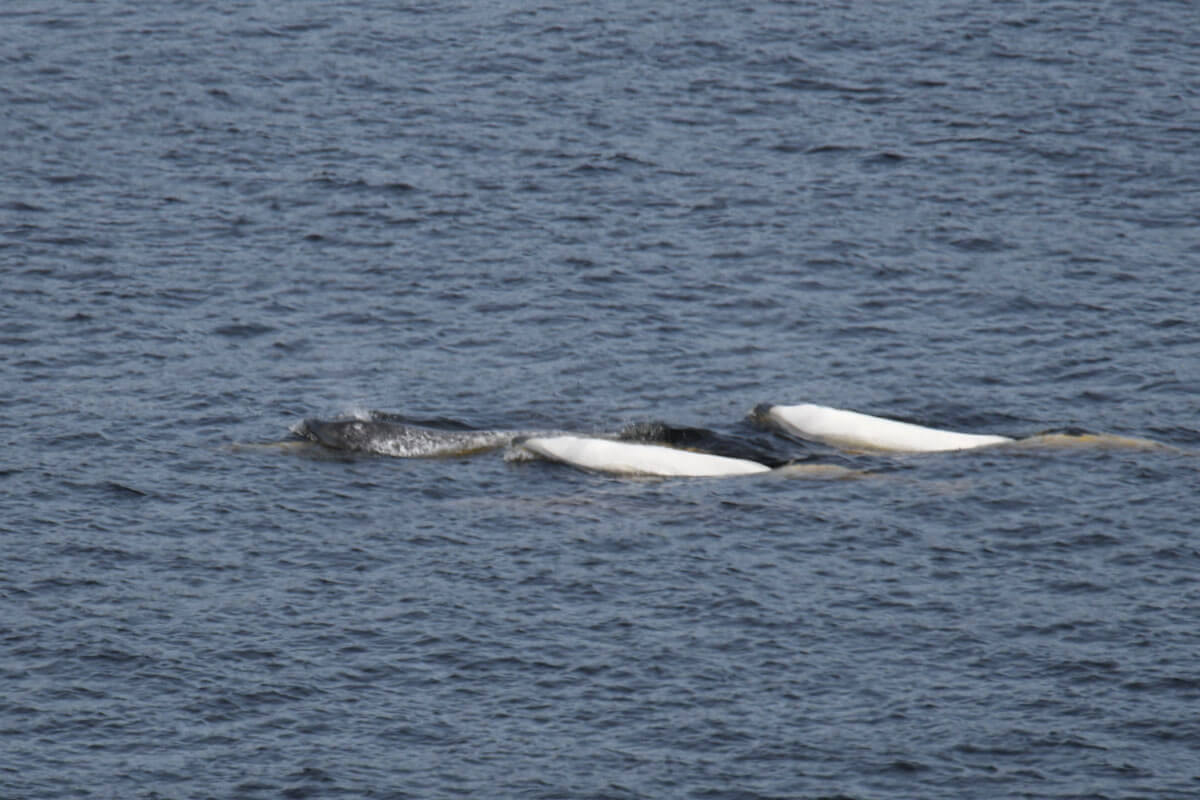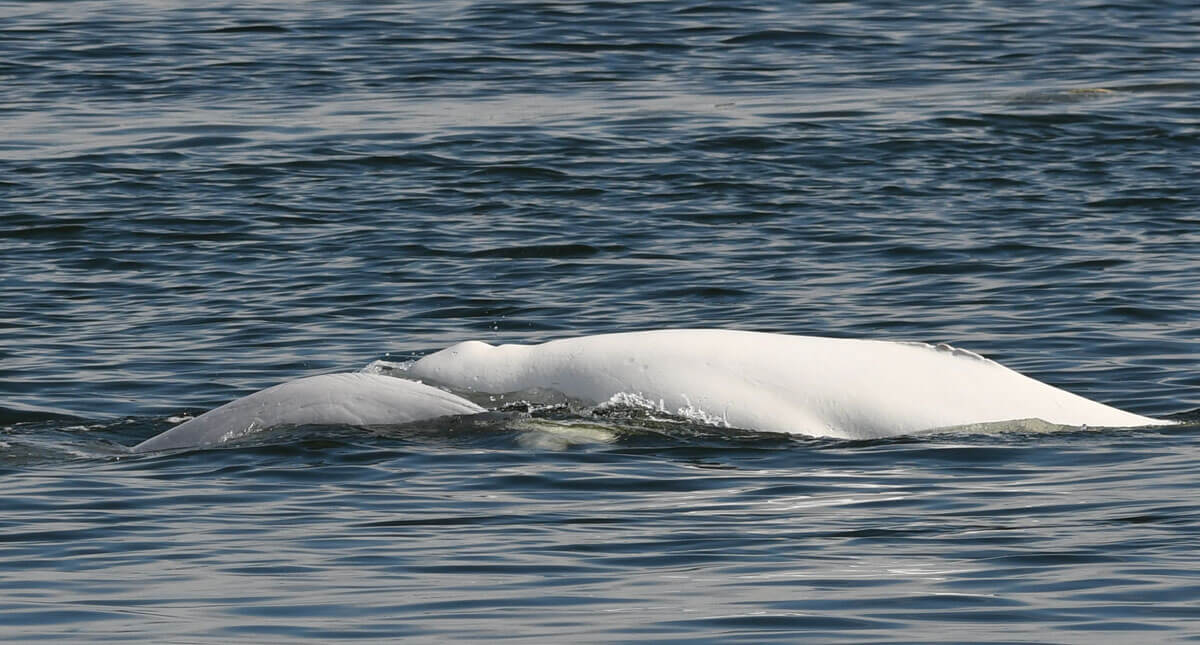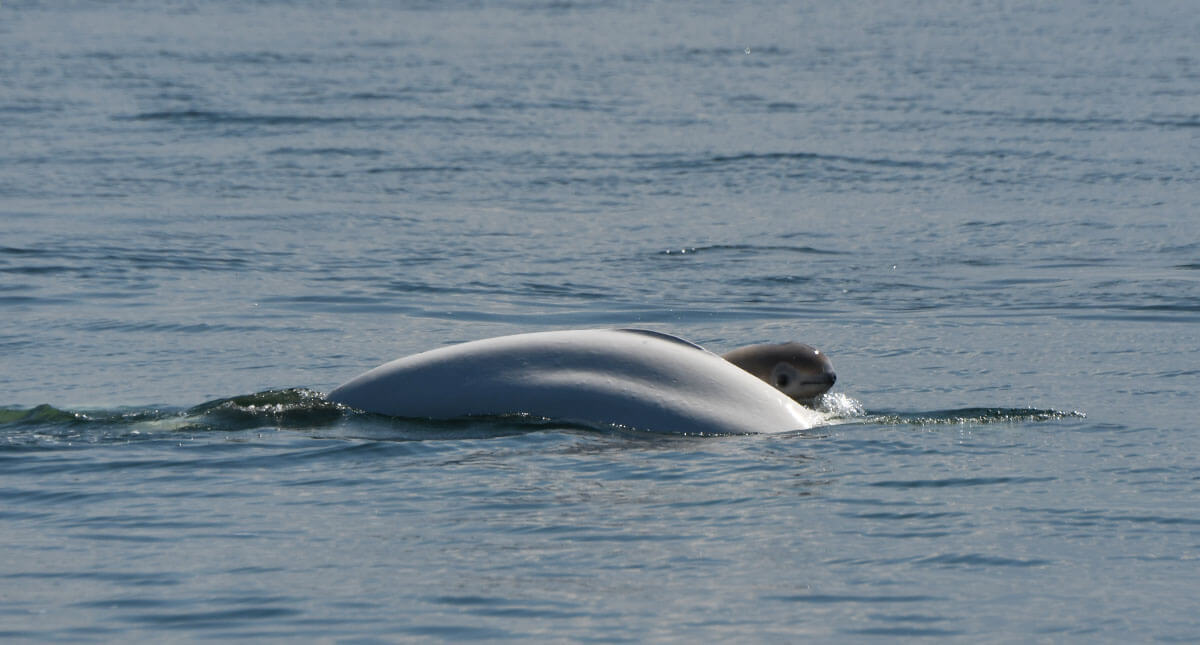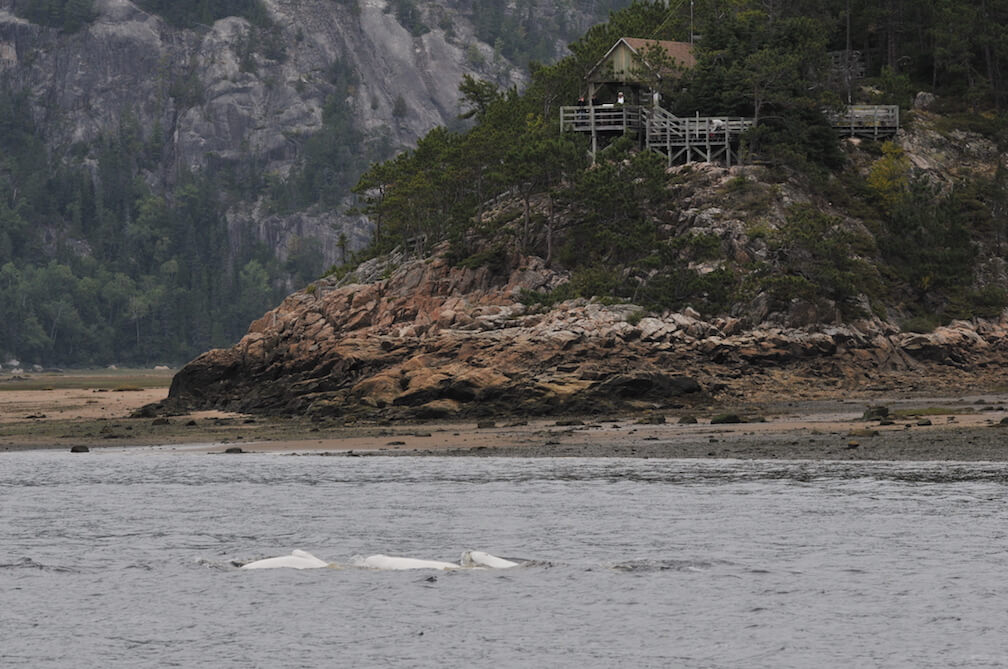Since 8 o’clock in the morning, GREMM (Group for Research and Education on Marine Mammals) research assistant Mathieu Marzelière has been scanning the horizon from the Pointe-Noire Interpretation and Observation Centre. From his platform, he can see the mouth of the Saguenay, the tiny village of Tadoussac, and, if he turns his gaze slightly to the right, the immensity of the St. Lawrence. The two ferries that shuttle passengers back and forth between Baie-Sainte-Catherine and Tadoussac ply the waters at a steady pace, punctuating the technician’s hours of waiting.
The appearance of a white back suddenly captures his attention. With his tripod-mounted camera, he attempts to photograph the beluga as well as the dozens of others that follow. The photos will be added to GREMM’s collection for its photo-ID program, which for the first time in decades is dispatching its research assistants to the shores of Pointe-Noire and Baie-Sainte-Marguerite, in addition to the sea.
With or without belugas
Mathieu’s first sighting marks the start of a “contact”, a period lasting about two hours during which he photographs a herd of belugas. The animals sometimes show distinctive markings or scars on their flanks that can be used to identify them. Every half hour, Mathieu uses his voice recorder to indicate the size of the beluga herd, the animals’ age, their distance or even the presence of boats. “It allows us to put our beluga identifications into context and determine how they are using their habitat,” he explains. “In the mouth of the Saguenay, they appear to be mostly in transit,” he notes.
Rain or shine, he’s on duty, bundled up or with an extra layer of sunscreen, depending on the weather conditions. Belugas are not always as predictable, or are sometimes simply impossible to make out amongst the white eddies created by the wind or the reflections of the sun. And sometimes they are simply too far away to recognize. “Beyond 300 metres, they become difficult to identify, even with a 600 mm lens”, points out Mathieu.
Two hours have passed since his first sighting; no more belugas on the horizon. The research assistant ends his “contact” and completes a detailed account of the data he has collected, glancing up every now and again to watch for the arrival of a new beluga.
From sea to land
When Mathieu photographs belugas, it is usually aboard GREMM’s research vessel, the Bleuvet. Due to the swell, he must be careful not only to stay on his two feet, but also to keep a steady hand and ensure that his photos are sharp enough to readily distinguish the animals. From shore, the challenges he faces are different. “Here, we wait for the belugas to come to us rather than going after them,” says Laurence Tremblay, another GREMM research assistant who works in Pointe-Noire.
While the wait can be long, it’s usually worth it. In Baie-Sainte-Marguerite, their colleague has already witnessed the arrival of a hundred or so belugas. “When they show up, we shift into high gear!” she says with a smile. “We only have 20 or 30 minutes to photograph them as they pass by the observation post, and then we have to wait until they leave the bay before they pass by again.” Belugas tend to linger in the large bay to socialize, give birth or nurse – awe-inspiring activities that the research assistant must not let distract her from her camera.
Belugas in the office
4 p.m. His face reddened by the sun, Mathieu stows his equipment and leaves Pointe-Noire to take the ferry back to Tadoussac, where GREMM’s offices are located. His photo-identification work is not quite finished, however. A few days a week, he sits down in front of his computer to sort through and crop his photos. They are then forwarded to Marie-Hélène D’Arcy, team lead of the photo-ID program who has been “matching” belugas for over 20 years. For Marie-Hélène, photos taken from land do not create an additional challenge for beluga identification. “The greatest challenge is rather the sheer volume of photos to process,” she believes.
If GREMM is now undertaking photo-ID work from shore, it’s because the team supporting the project already seems to have demonstrated the value, whether in the office or on board the Bleuvet.
Identifications from August
Preliminary IDs consist of quickly scanning all photos in order to identify some of them at first glance.
- Artsea, adopted by Simons
- Blanchon, adopted by Yolande Simard Perrault
- Bleuoutremer, adopted by Bleuoutremer
- Céline, adopted by Leslie B. Durst
- Corsaire, adopted by magazine GEO readers
- DL9039, currently in adoption by polyvalente Chanoine-Armand-Racicot
- Hector, adopted by Cowboys Fringants and their fans
- John A. Macdonald, adopted by Fairmont Hotel Macdonald
- Leucas, given to the Prime minister of Canada
- Mirapakon, adopted by Mirapakon


